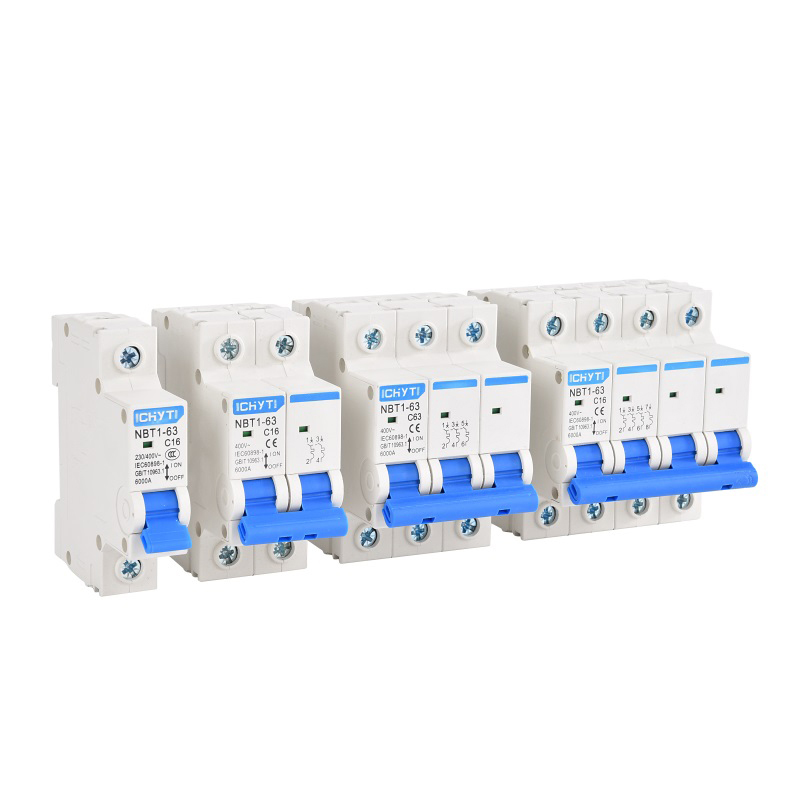
- English
- Español
- Português
- русский
- Français
- 日本語
- Deutsch
- tiếng Việt
- Italiano
- Nederlands
- ภาษาไทย
- Polski
- 한국어
- Svenska
- magyar
- Malay
- বাংলা ভাষার
- Dansk
- Suomi
- हिन्दी
- Pilipino
- Türkçe
- Gaeilge
- العربية
- Indonesia
- Norsk
- تمل
- český
- ελληνικά
- український
- Javanese
- فارسی
- தமிழ்
- తెలుగు
- नेपाली
- Burmese
- български
- ລາວ
- Latine
- Қазақша
- Euskal
- Azərbaycan
- Slovenský jazyk
- Македонски
- Lietuvos
- Eesti Keel
- Română
- Slovenski
- मराठी
- Srpski језик
Working principle of miniature circuit breakers
2024-04-10
Mini Circuit Breaker, abbreviated as MCB (Micro Circuit Breaker), is the most widely used terminal protection device in building electrical terminal distribution equipment. Used for short circuit, overload, overvoltage protection of single-phase and three-phase below 125A, including four types: single pole 1P, two pole 2P, three pole 3P, and four pole 4P.
Product Introduction
A circuit breaker refers to a mechanical switching device that can connect, carry, and break the current under normal circuit conditions, as well as connect, carry, and break the current for a certain period of time under specified abnormal circuit conditions.
Working principle
A miniature circuit breaker consists of an operating mechanism, contacts, protective devices (various releases), and an arc extinguishing system. Its main contact is manually operated or electrically closed. After the main contact is closed, the free release mechanism locks the main contact in the closed position. The coil of the overcurrent release and the thermal element of the thermal release are connected in series with the main circuit, while the coil of the undervoltage release is connected in parallel with the power supply. When a short circuit or severe overload occurs in the circuit, the armature of the overcurrent release is attracted, causing the free release mechanism to operate and the main contact to disconnect the main circuit. When the circuit is overloaded, the thermal element of the thermal release heats up, causing the bimetallic sheet to bend and pushing the free release mechanism to operate. When the circuit is under voltage, the armature of the undervoltage release is released. It also enables the free release mechanism to operate.
Product selection
In civil building design, low-voltage circuit breakers are mainly used for overload, short circuit, overcurrent, loss of voltage, undervoltage, grounding, leakage, automatic switching of dual power sources, and protection and operation of motors during infrequent starting. In addition to complying with basic principles such as the environmental characteristics of low-voltage electrical equipment (see Industrial and Civil Power Distribution Design Manual), the selection principles should also consider the following conditions:
1) The rated voltage of the circuit breaker should not be less than the rated voltage of the line;
2) The rated current of the circuit breaker and the rated current of the overcurrent release shall not be less than the calculated current of the line;
3) The rated short-circuit breaking capacity of the circuit breaker shall not be less than the maximum short-circuit current in the line;
4) The selection of distribution circuit breakers should consider the short delay short-circuit making and breaking capacity and the coordination between delay protection levels;
5) The rated voltage of the circuit breaker undervoltage release is equal to the rated voltage of the line;
6) When used for motor protection, selecting a circuit breaker should consider the starting current of the motor and ensure that it does not operate within the starting time;
7) The selection of circuit breakers should also consider the selective coordination between circuit breakers, and between circuit breakers and fuses.




